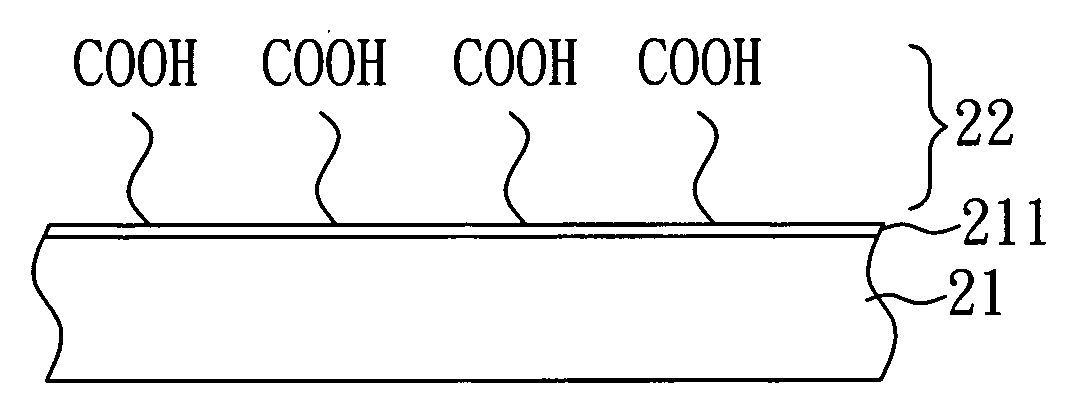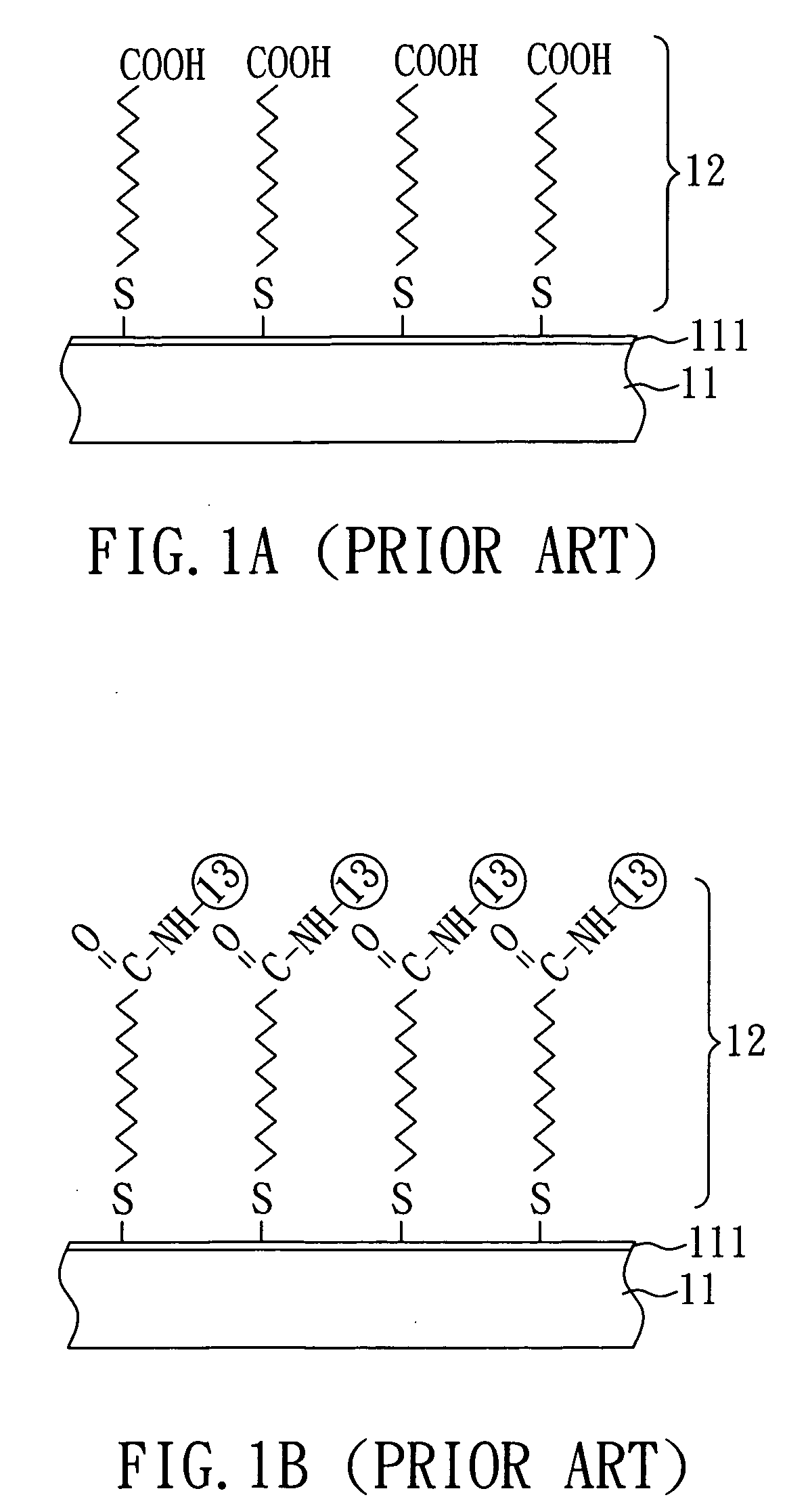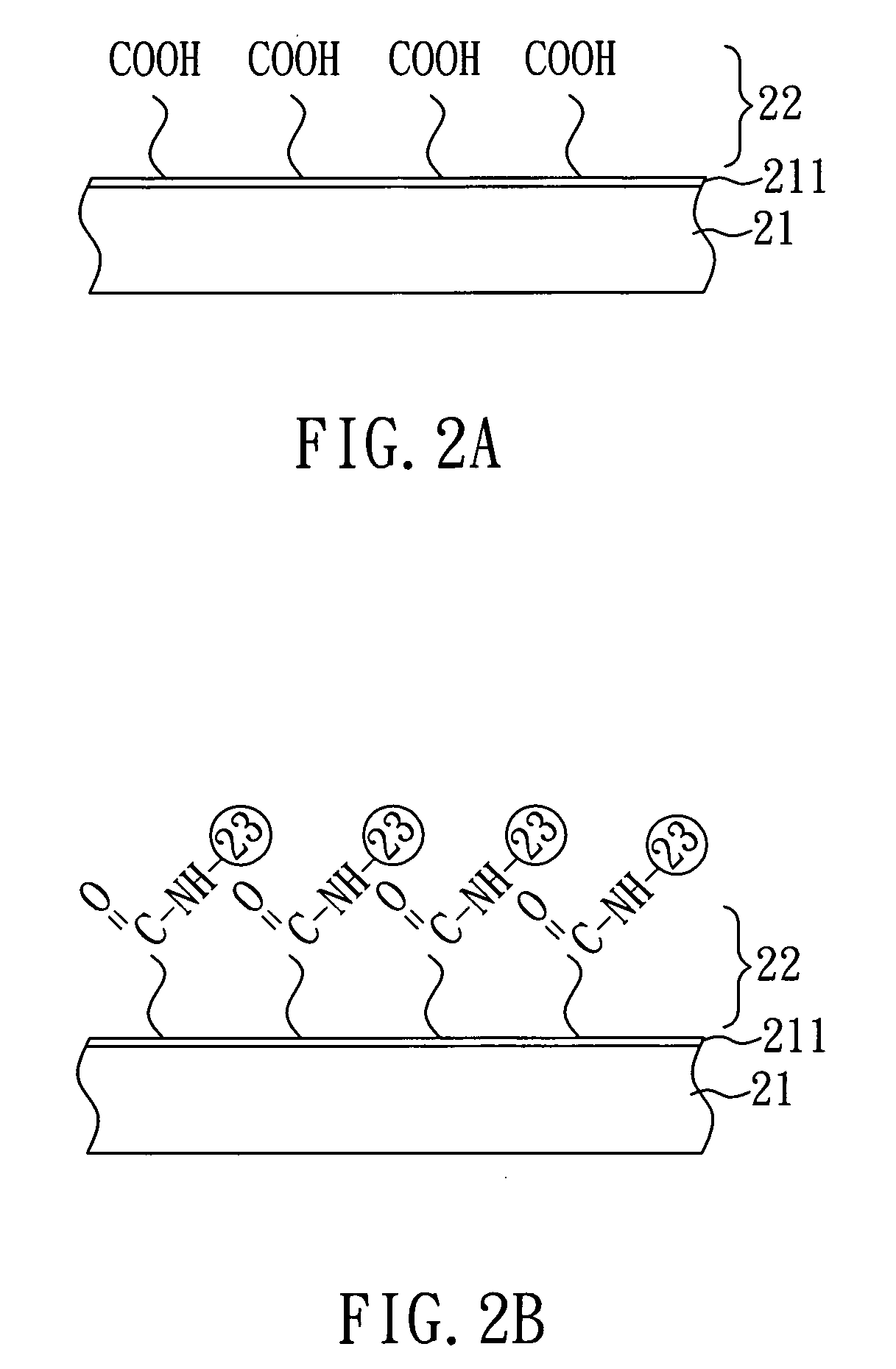Method for biomolecule immobilization
a biomolecule and immobilization technology, applied in the field of biomolecule immobilization, can solve the problems of increasing experimental instability and reducing uniformity, time-consuming process, and inability to control the density of surface grafts, so as to enhance the stability of manufacture, reduce manufacturing time, and control the density of bonded molecules efficiently
- Summary
- Abstract
- Description
- Claims
- Application Information
AI Technical Summary
Benefits of technology
Problems solved by technology
Method used
Image
Examples
embodiment 1
[0021]With reference to FIGS. 2A to 2B, there is shown a method for biomolecule immobilization of the present embodiment.
[0022]As shown in FIG. 2A, a substrate 21 having a metal film 211 on one surface thereof is first provided. In the present embodiment, the substrate 21 is a silicon substrate and the metal film 211 is a gold film. Subsequently, a surface modification layer 22 is formed on the metal film 211 of the substrate 21 by plasma surface modification.
[0023]In the present embodiment, the plasma surface modification is performed by plasma polymerization and uses isopropanol as a monomer for plasma polymerization. In detail, the raw gas of isopropanol is introduced in a vacuum discharge system, and the raw gas is split into various species, followed by the deposition of a polymerized film on the surface of the substrate through complex chemical reaction so as to form a surface modification layer 22 of COOH groups on one surface of the substrate 21. Herein, the surface modifica...
embodiment 2
[0025]With reference to FIGS. 3A to 3C, there is shown a method for biomolecule immobilization of the present embodiment.
[0026]As shown in FIG. 3A, a substrate 31 having a metal film 311 on one surface thereof is first provided. In the present embodiment, the substrate 31 is a silicon substrate and the metal film 311 is a gold film. Subsequently, a surface-active layer 32′ is formed on the metal film 311 of the substrate 31 by plasma surface modification. In the present embodiment, the plasma surface modification is performed by plasma polymerization. The process for plasma polymerization is the same as that in Embodiment 1 except that the present embodiment uses hexamethyldisilazane (HMDSAZ) as a monomer for plasma polymerization. Accordingly, the surface-active layer 32′ is formed, as shown in FIG. 3A.
[0027]Then, as shown in FIG. 3B, under UV light, acrylic acid as a monomer for grafting polymerization is bonded to the surface-active layer 32′ as shown in FIG. 3A by grafting polym...
PUM
 Login to View More
Login to View More Abstract
Description
Claims
Application Information
 Login to View More
Login to View More - R&D
- Intellectual Property
- Life Sciences
- Materials
- Tech Scout
- Unparalleled Data Quality
- Higher Quality Content
- 60% Fewer Hallucinations
Browse by: Latest US Patents, China's latest patents, Technical Efficacy Thesaurus, Application Domain, Technology Topic, Popular Technical Reports.
© 2025 PatSnap. All rights reserved.Legal|Privacy policy|Modern Slavery Act Transparency Statement|Sitemap|About US| Contact US: help@patsnap.com



